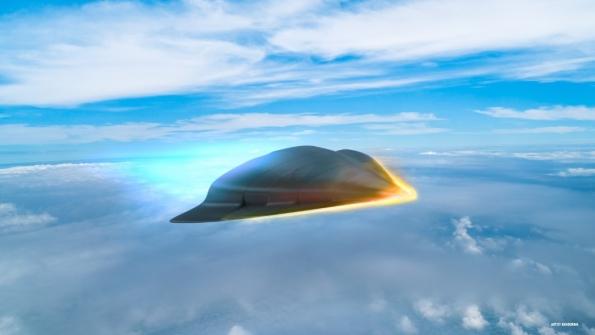
ORLANDO—Lockheed Martin expects to complete the critical design review (CDR) on Feb. 27 for the AGM-183A Air-launched Rapid Response Weapon (ARRW), the U.S. military’s most technologically ambitious hypersonic weapon, an executive said.
The key milestone, indicating an imminent design freeze, comes as part of an unusual development schedule imposed on the ARRW program. The technical complexity of ARRW stems from its high lift-to-drag profile, a shape the U.S. military has never tested successfully in flight. The Defense Advanced Research Projects Agency’s (DARPA) Tactical Boost Glide (TBG) program, which shares the advanced ARRW profile, is intended as a risk-reduction measure for ARRW, but still has not completed a self-powered flight test.
In fact, the CDR milestone for ARRW originally was scheduled to come after a first flight for TBG, but the Air Force has kept ARRW on its original pace even as schedules for the DARPA program have slipped.
“The [original TBG and ARRW] schedules were more serial,” said John Varley, vice president of hypersonics for Lockheed’s Missiles and Fire Control business. “As we’re moving fast, things are merging together and becoming more parallel. If we waited until all that was done, we wouldn’t be moving at the pace that the customer is looking for.”
Indeed, Jeff Babione, president of Lockheed’s Skunk Works, said last June that he expected the first TBG flight by the end of last year or early next year. But U.S. defense officials now say they expect the DARPA program to enter flight testing later this year, after a planned test of the Block 1 version of the Common Hypersonic Glide Body, a low-lift-to-drag shape for intermediate-range Army and Navy missiles.
In other ways, ARRW is further along in development than most military acquisition projects at the CDR milestone, Varley said.
“It’s not the traditional way of doing it, because at CDR you wouldn’t have hardware built, you wouldn’t have [demonstration/validation] testing done. And this is very mature,” he said.
